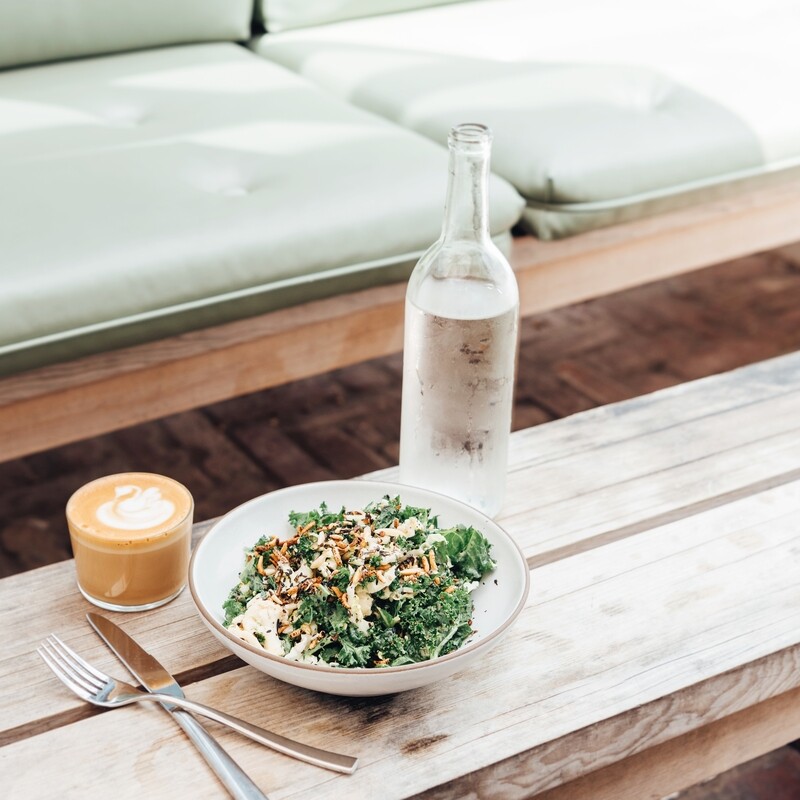From energizing acai bowls and smooth dark chocolate to creamy kale salads and perfectly roasted sweet potatoes, colorful plant foods have one particular thing in common: antioxidants. Abundant in many of our day-to-day staples, antioxidants reign supreme. They’re essential for the survival of all living things. They’re foundational to our wellbeing, much like vitamin B12 and iron. To introduce more of these damage-fighting superstars into our lives, we’re highlighting 13 foods that are high in antioxidants—and the best recipes to use them in.
Although we generate our own antioxidants, we also need to consume them. Our bodies’ cells naturally produce powerful antioxidants—such as glutathione—but the foods we eat supply other antioxidants, like vitamin C and E. Between what the body produces and what nature provides, we get the best of both worlds. And when we talk about antioxidants, free radicals are involved. You’ll often hear that to fight free radicals, antioxidants are key. So what are they, exactly? Let’s dive in.
Featured image by Michelle Nash.

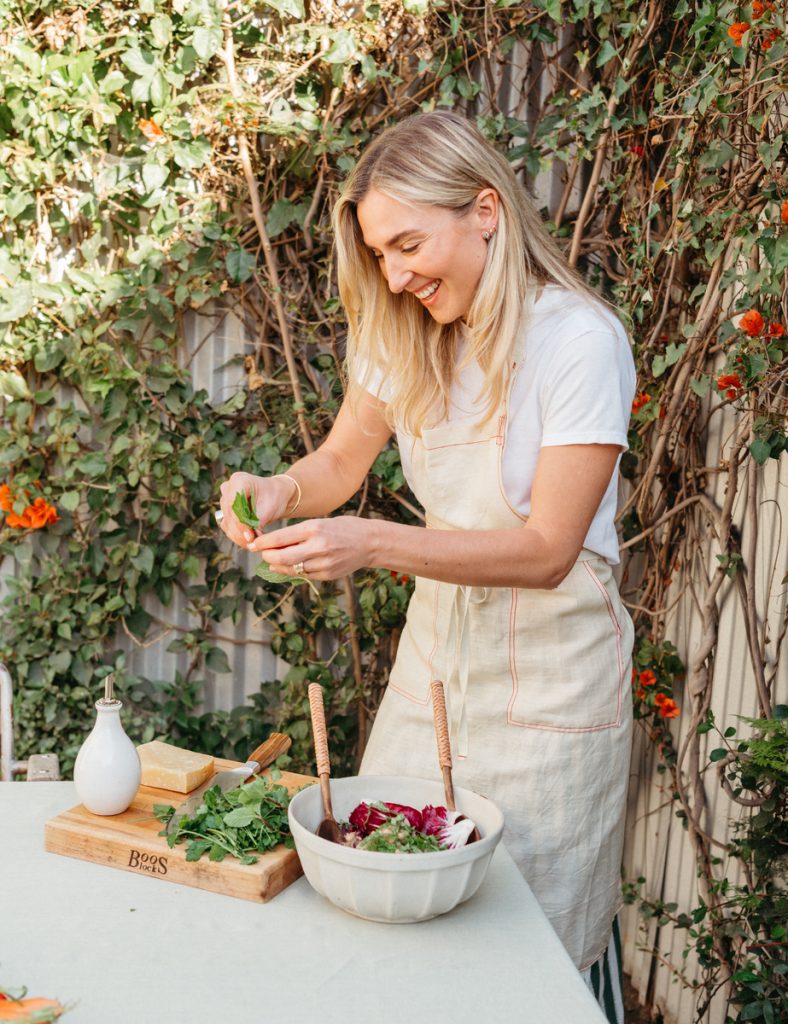
What are free radicals?
Free radicals are highly reactive and unstable molecules. They’re formed when molecules (or atoms) gain/lose electrons. In turn, free radicals can easily react with other molecules. As you can imagine, these unpaired electrons don’t like being alone, so they search the body for an electron to pair with. When antioxidants are available, they step in. Antioxidants stabilize free radicals, stopping any further damage in the body.
Despite getting a bad rap, we naturally produce free radicals—they’re a byproduct of metabolism and exercise, for example. The issue occurs when we have an abundance of free radicals. And when we have too many for the body to regulate, a condition known as oxidative stress happens. Oxidative stress can be caused by many factors like chronic inflammation, smoking, pesticides, radiation, and industrial chemicals. Thankfully, that’s where antioxidants come to the rescue.


What are antioxidants, and why do we need them?
Antioxidants are chemicals that help prevent or limit the damage caused by free radicals. They slow the wear and tear to cells caused by oxidative stress. As antioxidants balance free radicals, these free radicals are much less likely (or entirely unable) to cause damage to other cells. Generally speaking, antioxidants are powerful compounds that keep our immune systems working strong; i.e., they’re everyday superheroes.
Because antioxidants have the ability to protect the body’s cells against free radicals, we need them to optimize our wellbeing. Given their ability to neutralize free radicals, antioxidants boost overall health and can potentially ward off certain diseases. In fact, research is currently underway to investigate the role that antioxidants play in decreasing the risk of developing cancer, but consuming foods that are high in vitamin C, vitamin E, and beta carotene can support the growth of healthy cells.


The Most Important Antioxidants
Of the hundreds (possibly thousands) of different substances that can act as antioxidants, the most familiar ones are vitamin A, C, E, beta carotene, lutein, selenium, and manganese. These come in the form of food and supplements—bell peppers, oranges, avocados, carrots, Brazil nuts, etc. These substances are joined by other well-known compounds in the wellness world: coenzyme Q10, lipoic acid, flavonoids, polyphenols, phytoestrogens, and more—which is why eating foods that are high antioxidants and these compounds is so important.
What foods are high in antioxidants?
In addition to the body’s innate ability to keep free radicals in check, building a diet with foods that are high in antioxidants is an extra defense layer. Think: Eating the rainbow. Plant foods are abundant in a variety of vitamins and minerals, including immune-boosting antioxidants. These include fruits, vegetables, whole grains, nuts, seeds, herbs, and spices. Those with substantial levels of vitamin A, C, E, beta carotene, lutein, selenium, and/or manganese are all considered foods that are high in antioxidants.
Specifically, garlic, leeks, sweet potatoes, peppers, broccoli, walnuts, pecans, and berries are all rich sources of antioxidants. When you think about building your breakfast, lunch, and dinner, try to choose the rainbow: red, orange, deep yellow, dark leafy greens, and purples. When possible, buy organic to limit additional exposure to chemicals and pesticides.


Antioxidants as Part of a Healthy Diet
When it comes to getting enough antioxidants every day, think of adding as many colors to your plate as possible. There isn’t necessarily a target amount of antioxidants, and every person has his or her own unique needs, but eating a variety of plants throughout the day is beneficial. Making a smoothie for breakfast, a leafy green salad for lunch and a grain bowl for dinner will certainly include a plethora of foods that are high in antioxidants. And thankfully, red wine and coffee count, too. In fact, coffee is one of the highest sources of antioxidants in the American diet.
13 Foods That Are High in Antioxidants
- Artichokes
- Beets
- Blueberries
- Carrots
- Dark Chocolate
- Goji Berries
- Kale
- Pecans
- Purple Cabbage
- Purple Grapes
- Spinach
- Strawberries
- Walnuts

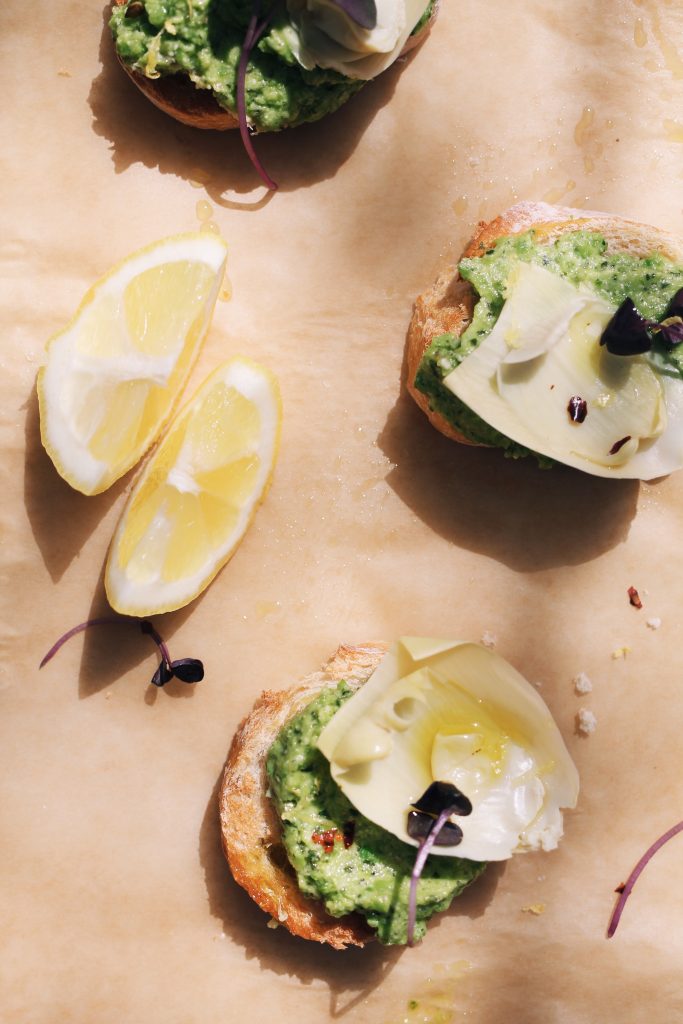
Artichokes: May lower bad cholesterol
Artichokes are especially rich in the antioxidant known as chlorogenic acid. Studies suggest that the antioxidant and anti-inflammatory benefits of chlorogenic acid may reduce the risk of type 2 diabetes and heart disease. However, the antioxidant content of artichokes can vary, depending on how they are prepared. Boiling artichokes, for example, may raise their antioxidant content by eight times, and steaming them may raise it by 15 times.
Recipe: Artichoke and Spring Pea Crostini


Beets: May protect the liver from inflammation
Beets (and beetroot juice) contain antioxidants, vitamin A, vitamin B-6, and iron. These compounds help protect the liver from inflammation and oxidative stress while enhancing its ability to remove toxins from the body. Score! Beets are also rich in a group of antioxidants called betalains, which give them their distinctive reddish color.
Recipe: Roasted Beet Tostada With Avocado Crema, Goat Cheese & Pepitas


Wild Blueberries: Can directly increase antioxidant levels in the body
One of the highest antioxidant levels of all common fruits and vegetables, blueberries (specifically, wild blueberries) are rich in anthocyanin, a flavonoid with potent antioxidant capacity. The antioxidant king, wild blueberries have two times more antioxidants than ordinary blueberries. With high levels of polyphenols, wild blueberries protect the body against inflammation.
Recipe: Lani’s Blueberry Power Muffins (Gluten & Dairy Free)

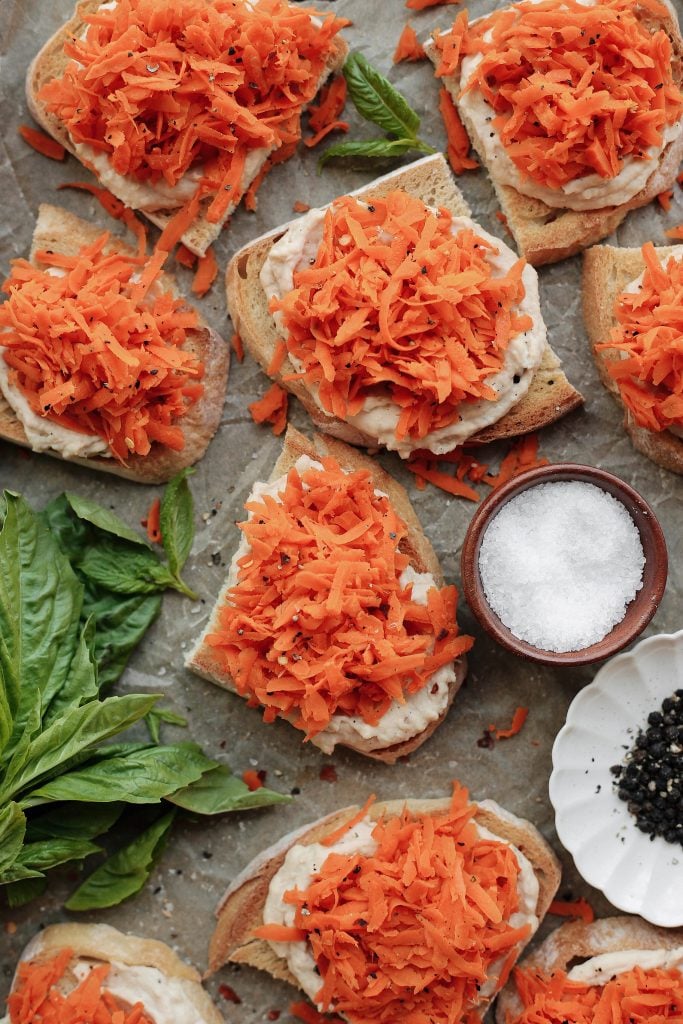
Carrots—May improve heart health
Carrots have two main types of antioxidants: Carotenoids and anthocyanins. Carotenoids give carrots their orange and yellow colors, while anthocyanins are responsible for red and purple coloring. These antioxidants are known for supporting heart and eye health. Because of this, carrots are well equipped to be associated with foods that are high in antioxidants.
Recipe: Sautéed Garlic, Carrot, and Hummus Toasts


Dark Chocolate—May lower blood pressure
Dark chocolate is loaded with organic compounds that are biologically active and function as antioxidants. These include polyphenols, flavanols, and catechins, among others. Some research suggests that dark chocolate may help lower the risk of heart disease, reduce inflammation and insulin resistance, and improve brain function.
Recipe: Double Chocolate Orange and Hazelnut Biscotti

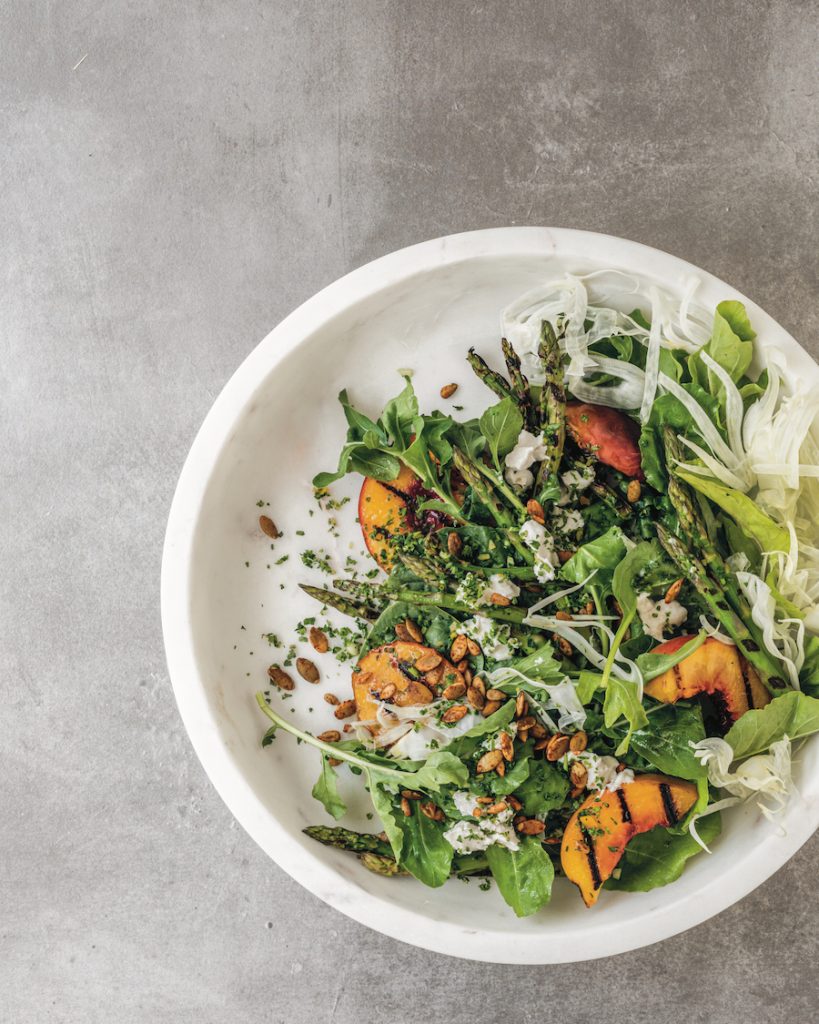
Goji Berries—Can support the immune system
Goji berries’ purported benefits range from anti-aging effects to glucose regulation and immune function support. Like other foods that are high in antioxidants, such as blueberries and raspberries, Goji berries contain large amounts of vitamins A and C. These vitamins are vital for building immunity and preventing illnesses ranging from the common cold to chronic diseases.
Recipe: Grilled Peach and Asparagus Salad with Spicy Pepitas, Cashew Mozzarella, and Goji Chipotle Dressing

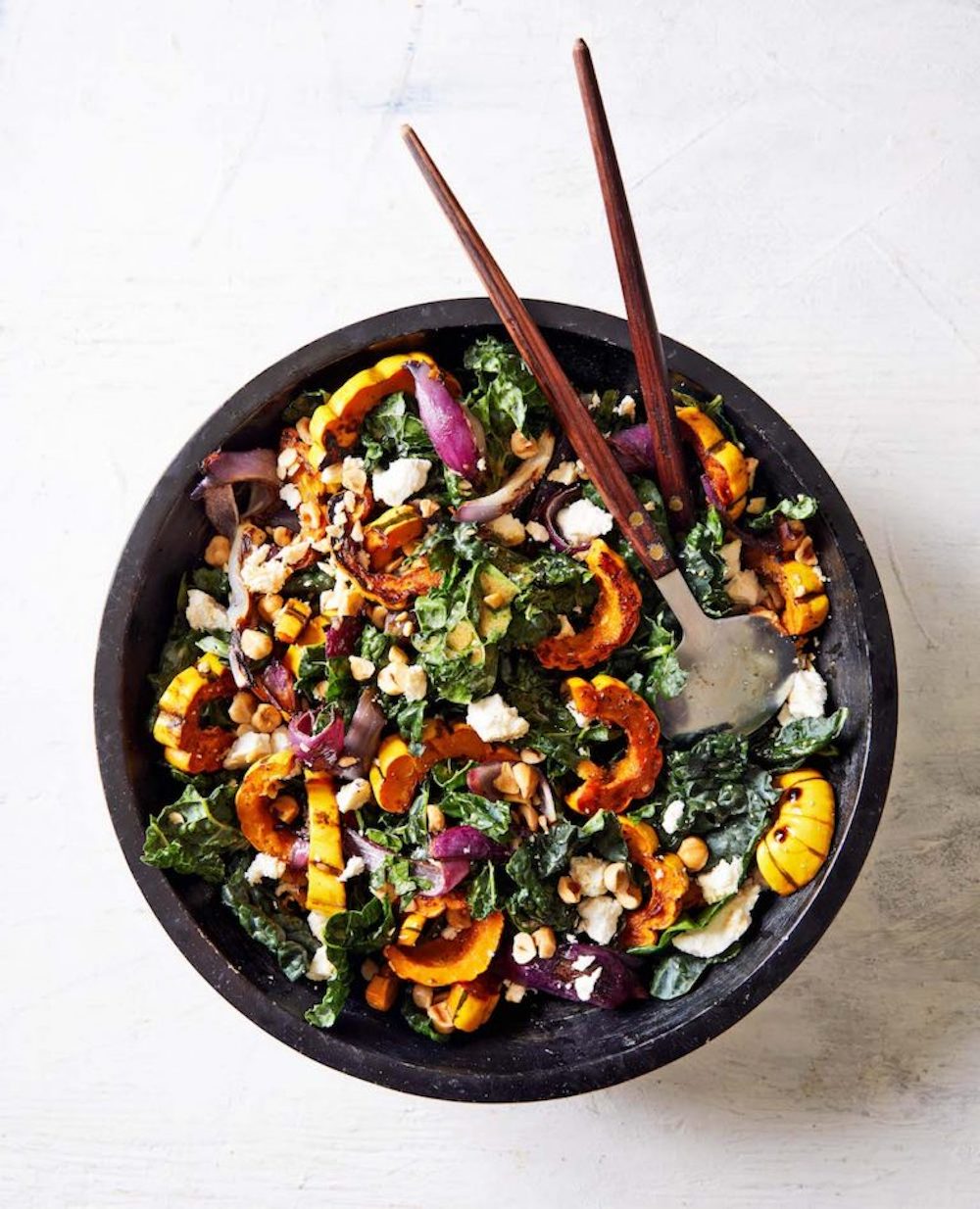
Kale—Can counteract oxidative stress
Kale, like other leafy greens, is high in antioxidants. These include beta-carotene and vitamin C, as well as various flavonoids and polyphenols. One cup of chopped kale provides more than your recommended daily allowance of vitamins A, C, and K. Easy as that!
Recipe: Delicata Squash and Kale Salad


Pecans—May enhance the body’s immune response
Along with feeling energized and satiated, pecans (like walnuts, almonds, etc.) are high in vitamin A. In fact, research shows that pecans are ranked highest—of any nut—in terms of their antioxidant capacity. It only takes about an ounce (or about eight pecans) to get its nutritional and antioxidant benefits.
Recipe: Burrata, Fig, & Arugula Salad

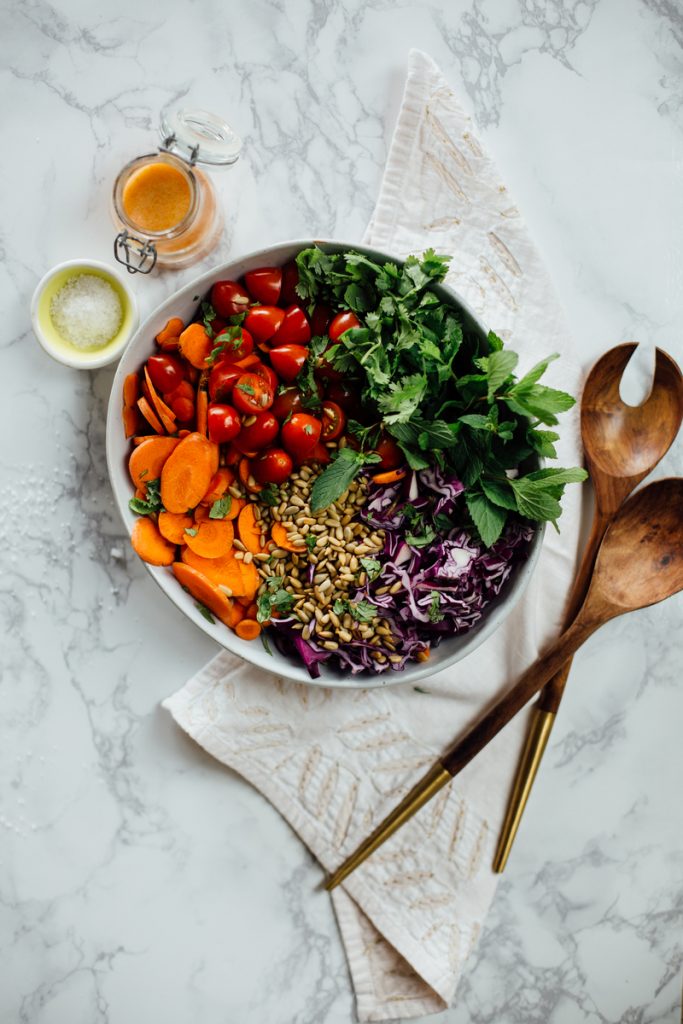
Purple Cabbage—May protect against heart disease
Purple cabbage, along with other dark-colored produce, is loaded with phytochemicals, antioxidants that may help protect against heart disease. Two of those phytochemicals, anthocyanin, and proanthocyanidin, can support your immune system.
Recipe: Sunshine Detox Salad


Spinach—Can improve digestion
The fresh leaves of spinach are a beneficial source of vital antioxidants like vitamin A, vitamin C, and antioxidant flavonoids such as lutein, zeaxanthin, and beta carotene. Of all leafy greens (including kale, arugula, turnip greens, etc.), spinach is one of the most nutritionally dense vegetables.
Recipe: Spinach and Ricotta Pizza With Garlicky Olive Oil

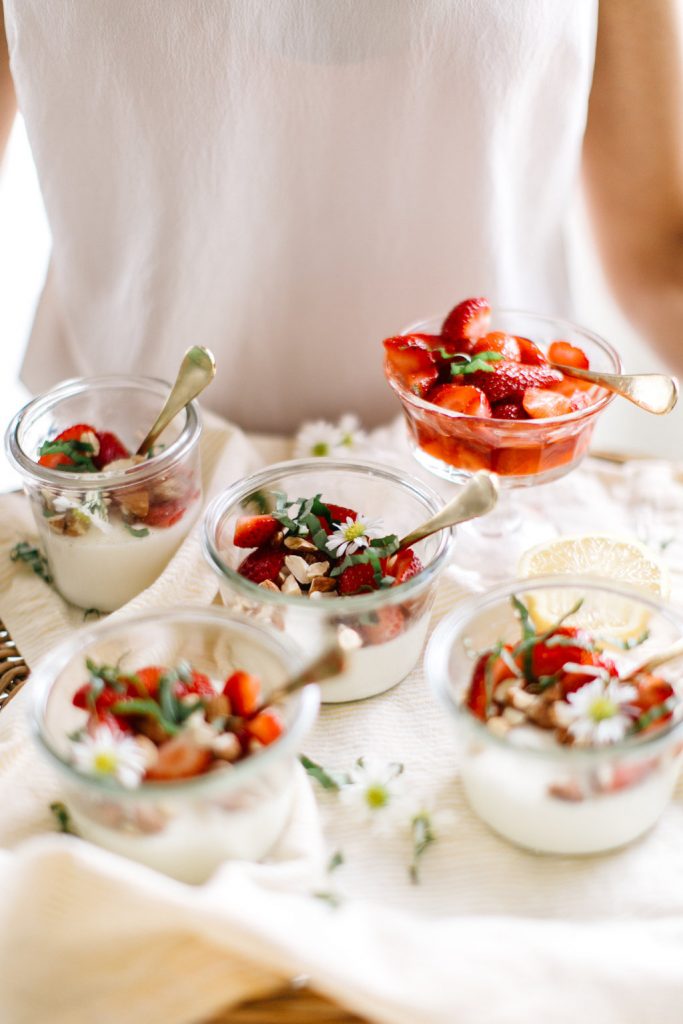
Strawberries—Can help maintain healthy vision
Along with other berries, strawberries are loaded with polyphenols. They are an excellent source of vitamin C and manganese. Strawberries are also rich in antioxidants—possibly benefiting heart health, vision, and blood sugar regulation. In fact, the antioxidant properties in strawberries can even help prevent cataracts.
Recipe: Vanilla Panna Cotta with Strawberries, Basil, & Almonds


Walnuts—Can decrease heart disease risk factors
Many health benefits associated with walnuts, such as reduced inflammation and improved heart disease risk factors, are due to their high omega-3 and antioxidant compounds. Their antioxidant levels are particularly high in the papery skin of walnuts, which contain vitamin E, melatonin, and polyphenols.
Recipe: Raw Carrot Salad With Dates, Walnuts and Aleppo


